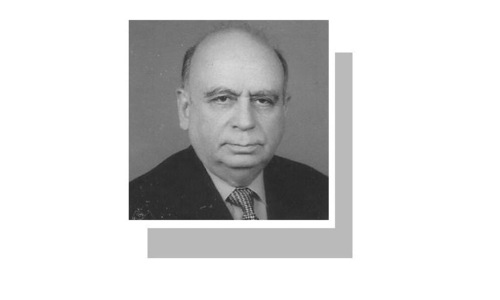Pak-India trajectory

PRIME Minister Narendra Modi has been re-elected. So what next for Pakistan-India relations? Will the neighbours start talking again? Certainly. But will their dialogue amount to anything? I am afraid not. The irony is that whether or not India and Pakistan are talking their relationship changes little, as if it has been inoculated against friendship since infancy.
The shadow of history has darkened the two countries’ view of each other. The burden of the past continues to oppress the present making the relationship resistant to change. What makes change still harder are their foreign policies, resting on conflicting identities and national purposes and moving in colliding orbits. Each has remained an indelible fixture of the other’s domestic politics, compromising the will to change.
Modi’s hard line on Pakistan is not exceptional. This has been the default position of most Indian leaders. The difference is Modi’s perceptions are beating to the rhythm of global sentiments towards Pakistan especially in the West that have turned negative. Modi’s negativity towards Pakistan is an asset in his relations with the US on which his foreign policy pivots. And at home he has played up the militancy issue to harden the existing public attitudes towards Pakistan, from which he derives political mileage and support for his brutal repression in India-held Kashmir.
History’s shadow has darkened the two states’ view of each other.
Relationships change when countries have a compulsion and incentive to seek change. Between India and Pakistan, one or the other stimulus has always been missing. When either sought better ties the other was not ready. That is how the 1999 bus diplomacy and 2001 Agra summit failed, and the Manmohan Singh-Pervez Musharraf back channel lost its way. On rare occasions when both sides were inclined to look for change, like Modi and Nawaz Sharif, non-state actors struck.
Given its economic challenges, Pakistan has stronger compulsions to seek better relations but like India wants the normalisation to be free of cost. Neither is ready to give the critical concessions the other demands. They have not only magnified each other as a threat but also exaggerated their own capability to deal with it. India feels that by virtue of its size and military and economic power it is intrinsically qualified to seek hegemony in the region. Pakistan rejects such a normalisation — particularly a normalisation minus Kashmir. That is why the relationship cannot improve as it lacks consensus on the terms of engagement.
Meanwhile, Modi feels the benefits of alienating Pakistan exceed those of conciliation. But the policy has run its course. Frustrated that despite its power and influence, India cannot manage Pakistan, he decided on military action after Pulwama. But it did not quite work because of Pakistan’s successful response. The military option has the risk of escalation or becoming a regular pattern thus losing its effectiveness.
That leaves dialogue as the only option. But the problem is, it is one thing to have a dialogue and quite another to institute a dialogue process that would require an understanding on fundamental issues. And understanding is hard to come by, especially as the relationship is no longer just about Pakistan and India. India’s Pakistan policy is an adjunct to its China policy and a footnote in its relationship with Washington. And India is a subset of Washington’s China policy and relations with Pakistan.
No meaningful change is expected from India unless some or all of the following happen: there is progress in Pakistan’s fight against militant organisations; Modi’s repression in Kashmir fails; Afghanistan stabilises along with visible improvement in Pakistan’s economy; and US-China relations head for a dangerous escalation forcing India to reassess its ties with Washington. These are big ifs for the future.
Meanwhile normalisation of Pakistan-India ties will remain subordinate to Modi’s global and regional ambitions, his Kashmir policy, and domestic politics. A resumed dialogue may achieve little more than some improvement in atmospherics, and a partial resumption of people-to-people contact, and progress on Kartarpur, all vulnerable to the next incident.
Ultimately, for durable peace and prosperity to come to South Asia what is required is the emergence of strong leaders in Pakistan and India and a paradigm shift in domestic politics, national policies and the mindset of the people, possibly led by the next generation. Only a different Pakistan and India can be friends one day.
Steve Cohen in Shooting for a Century fears India Pakistan rivalry could possibly last for a ‘century’, in cricket terminology. A forbidding thought indeed.
The writer, a former ambassador, is adjunct faculty Georgetown and Syracuse University.
Published in Dawn, May 25th, 2019












































